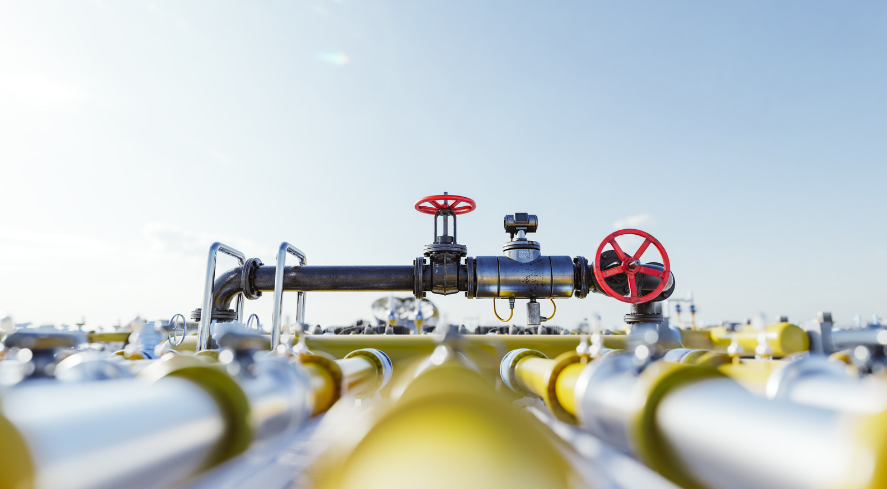Pipeline hot tapping is a critical process in maintaining pipeline systems without causing service interruptions. This method allows professionals to make connections to an active pipeline while the system is still in operation. However, as efficient as it is, pipeline hot tapping presents several safety challenges. Ensuring the integrity of the pipeline during such operations is crucial for preventing accidents, system failures, and environmental damage. This blog will delve into the safety measures necessary to protect both personnel and infrastructure during pipeline hot tapping operations.
Understanding Pipeline Hot Tapping
Pipeline hot tapping involves creating a connection to an active pipeline without shutting down the system. This technique is widely used in industries like oil & gas, water supply, and chemical processing, where continuous operation is essential. The main advantage of pipeline hot tapping is that it allows for maintenance, repairs, or additions to be made without disrupting the flow of product, minimizing downtime and maximizing operational efficiency. Common applications include installing monitoring equipment, bypasses, or branches to existing pipelines. Understanding how to safely carry out these operations is key to maintaining pipeline integrity throughout their service life.
Key Risks Associated with Pipeline Hot Tapping
While pipeline hot tapping provides a seamless method for system modifications, it comes with inherent risks. The most significant dangers associated with this procedure are high-pressure leaks, fire hazards, and possible explosions due to the unexpected release of gases or liquids. Improper execution of pipeline hot tapping can also lead to equipment malfunctions, which may result in serious accidents. High-pressure systems are especially vulnerable, and small errors in the procedure can cause catastrophic failure. These risks underline the importance of strict safety measures, meticulous planning, and expert execution when performing pipeline hot tapping.
Essential Safety Measures for Pipeline Hot Tapping
To ensure the safe execution of pipeline hot tapping, several safety measures must be adhered to before, during, and after the operation. Pre-operation protocols are fundamental, including conducting a thorough risk assessment of the pipeline’s current conditions. This involves checking material compatibility, ensuring the pipeline’s structural integrity, and verifying that all equipment is certified for use. During the operation, operators must wear appropriate personal protective equipment (PPE) and monitor critical factors like pressure, temperature, and flow rates closely. Compliance with safety standards, such as those outlined by the American Petroleum Institute (API 2201), is essential to safeguarding both the team and the environment during pipeline hot tapping.
Role of Training and Expertise in Safe Pipeline Hot Tapping
One of the most important factors in ensuring pipeline hot tapping safety is the training and expertise of the personnel involved. Operators must be highly skilled in recognizing potential risks and implementing best practices to mitigate them. Regular training sessions, including the use of simulation technology and on-site drills, are vital for ensuring that staff are well-prepared for any situation. In addition, safety managers must be proficient in emergency response procedures to act swiftly and effectively should an issue arise during pipeline hot tapping operations. The ability to make quick, informed decisions is crucial for preserving both human life and pipeline integrity.
Innovations in Pipeline Hot Tapping Technology
Technological advancements have greatly improved the safety of pipeline hot tapping operations. New tools and equipment, such as advanced sealing systems and automated monitoring devices, reduce the potential for human error and enhance operational safety. Automated systems can monitor critical parameters like pressure and temperature, sending real-time alerts if any deviations occur, thus preventing hazardous situations. Additionally, the development of more durable and precise hot tapping equipment has significantly lowered the risk of pipeline damage and leaks. By incorporating these innovations into pipeline hot tapping procedures, companies can ensure greater reliability and safety during maintenance activities.
Regulations and Standards for Pipeline Hot Tapping Safety
Adhering to global and regional safety regulations is essential when performing pipeline hot tapping. Regulatory bodies, such as OSHA and API, have established guidelines that must be followed to protect both workers and the environment. Compliance with these standards ensures that companies implement the correct safety measures, from equipment inspection to risk assessment. Failure to meet these requirements can lead to severe legal consequences and financial penalties, along with reputational damage. By aligning operations with these safety standards, companies not only ensure compliance but also uphold the highest levels of operational safety during pipeline hot tapping.
Environmental Considerations During Pipeline Hot Tapping
Pipeline hot tapping operations must also consider the environmental impact of the procedure. Safety measures should be in place to prevent hazardous spills or leaks that could harm surrounding ecosystems. Proper waste management protocols, including the containment and disposal of drilling fluids, are necessary to minimize the environmental footprint. Additionally, operators must ensure that all equipment used is regularly maintained and free of any defects that could lead to contamination. Being mindful of these environmental aspects during pipeline hot tapping helps mitigate potential damage to the surrounding area and supports sustainability efforts in the industry.
Benefits of Prioritising Safety in Pipeline Hot Tapping
Prioritising safety in pipeline hot tapping offers several benefits. It minimizes the risk of accidents, ensuring the protection of both personnel and infrastructure. By reducing the likelihood of pipeline damage, companies can extend the operational life of their systems, saving on costly repairs or replacements. Moreover, safety-first approaches help companies avoid operational disruptions, reducing downtime and ensuring that pipelines remain functional and productive. Overall, emphasizing safety in pipeline hot tapping contributes to a more efficient, reliable, and sustainable operation.
Takeaway
Pipeline hot tapping is a crucial technique in maintaining the integrity of active pipelines, but it requires a stringent focus on safety to avoid costly and dangerous incidents. By implementing robust safety protocols, investing in advanced technologies, and ensuring the expertise of personnel, companies can significantly reduce risks and maintain pipeline integrity during maintenance activities. Safety should always be a top priority, not just for compliance, but to safeguard the future of operations and the well-being of everyone involved.











